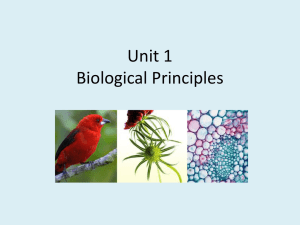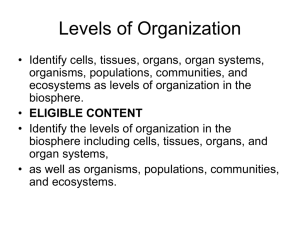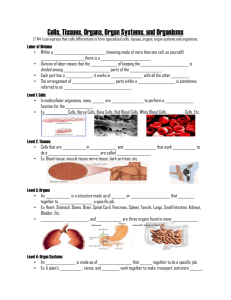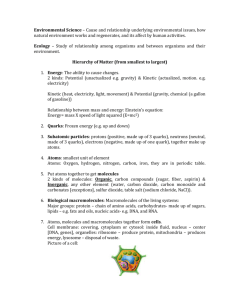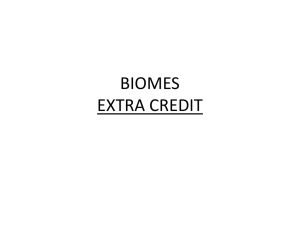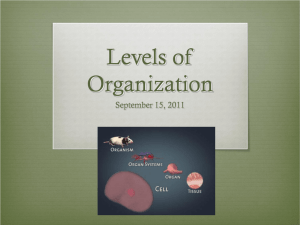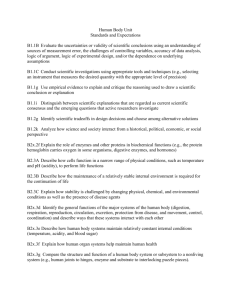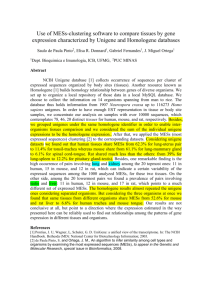Chapter 50 review key
advertisement
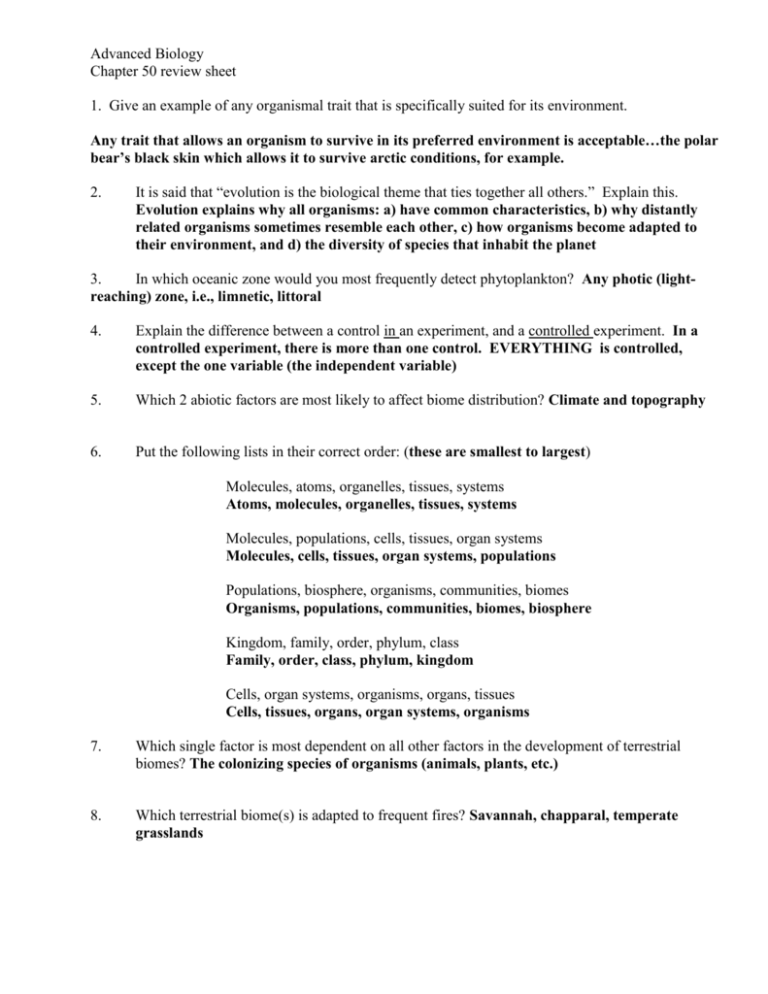
Advanced Biology Chapter 50 review sheet 1. Give an example of any organismal trait that is specifically suited for its environment. Any trait that allows an organism to survive in its preferred environment is acceptable…the polar bear’s black skin which allows it to survive arctic conditions, for example. 2. It is said that “evolution is the biological theme that ties together all others.” Explain this. Evolution explains why all organisms: a) have common characteristics, b) why distantly related organisms sometimes resemble each other, c) how organisms become adapted to their environment, and d) the diversity of species that inhabit the planet 3. In which oceanic zone would you most frequently detect phytoplankton? Any photic (lightreaching) zone, i.e., limnetic, littoral 4. Explain the difference between a control in an experiment, and a controlled experiment. In a controlled experiment, there is more than one control. EVERYTHING is controlled, except the one variable (the independent variable) 5. Which 2 abiotic factors are most likely to affect biome distribution? Climate and topography 6. Put the following lists in their correct order: (these are smallest to largest) Molecules, atoms, organelles, tissues, systems Atoms, molecules, organelles, tissues, systems Molecules, populations, cells, tissues, organ systems Molecules, cells, tissues, organ systems, populations Populations, biosphere, organisms, communities, biomes Organisms, populations, communities, biomes, biosphere Kingdom, family, order, phylum, class Family, order, class, phylum, kingdom Cells, organ systems, organisms, organs, tissues Cells, tissues, organs, organ systems, organisms 7. Which single factor is most dependent on all other factors in the development of terrestrial biomes? The colonizing species of organisms (animals, plants, etc.) 8. Which terrestrial biome(s) is adapted to frequent fires? Savannah, chapparal, temperate grasslands 9. List potential animal responses to changes in the environment from slowest to most rapid. Evolution, morphological change, acclimation, migration 10. In the movie “Deep Impact,” an extinction level meteor crashed into the earth. Which marine community was least affected by this event? Deep sea vent 11. What type of community would most likely have evolved to respond to different photoperiods? Why? Temperate forests, because they have the most drastic seasonal changes in length of daylight 13. What is acclimation? Temporary physical or physiological adaptations to changes in the environment. 14. What is the principle of allocation? Each organism has a limited amount of energy that can be allocated (allotted) for obtaining nutrients, escaping predators, etc. It must be “reserved” in order to obtain more energy. Much is used in everyday activity, but some MUST be used to obtain more. 15. Be able to explain how Earth’s position in the solar system, its behavior, and its physical characteristics shape ecosystems. Tilt of axis, revolution, rotation, latitude, longitude Also (from chapter 1) be able to discuss an appropriate approach and methodology to conducting science investigations. How they begin (observations or questions), hypothesis formation, experimentation…acceptance or rejection of a hypothesis, and changing it if you must reject it. When is a conclusion formed? A theory? Are theories changeable? These are questions that must be addressed when “doing” science.
